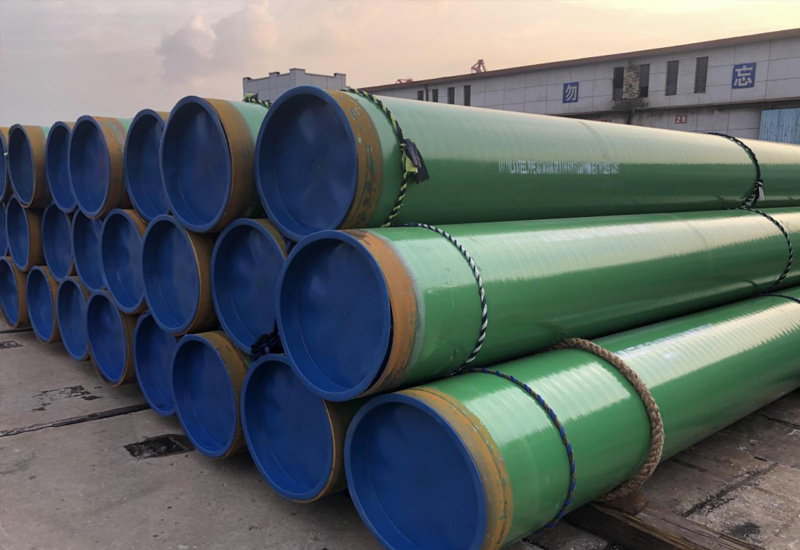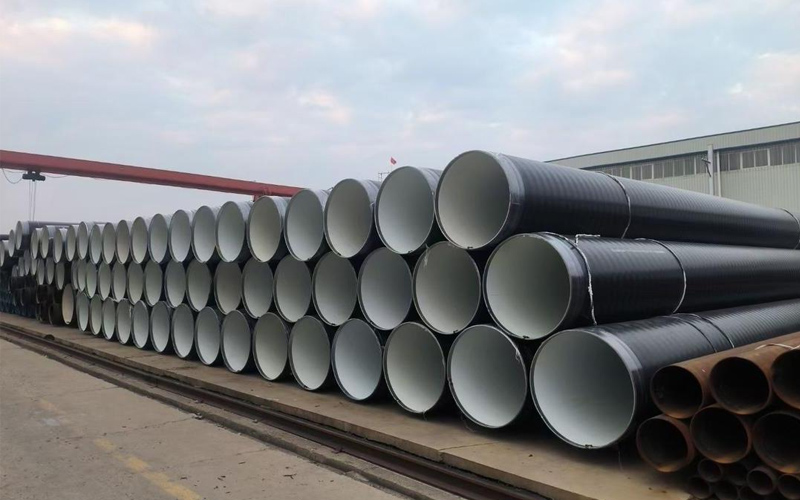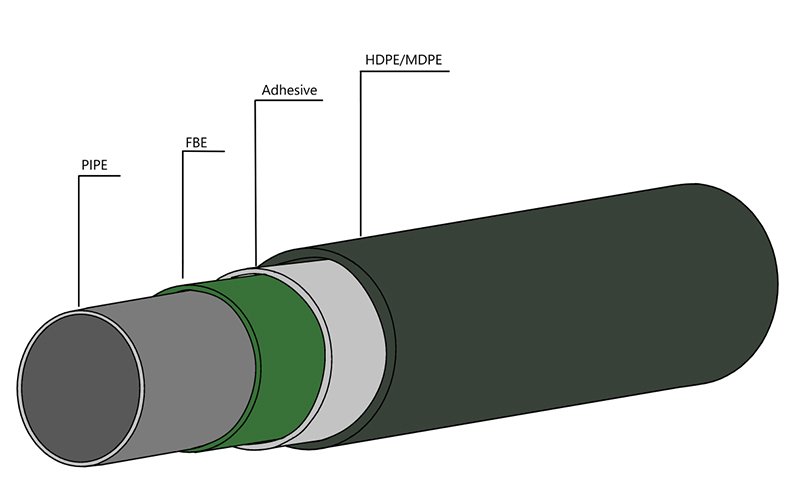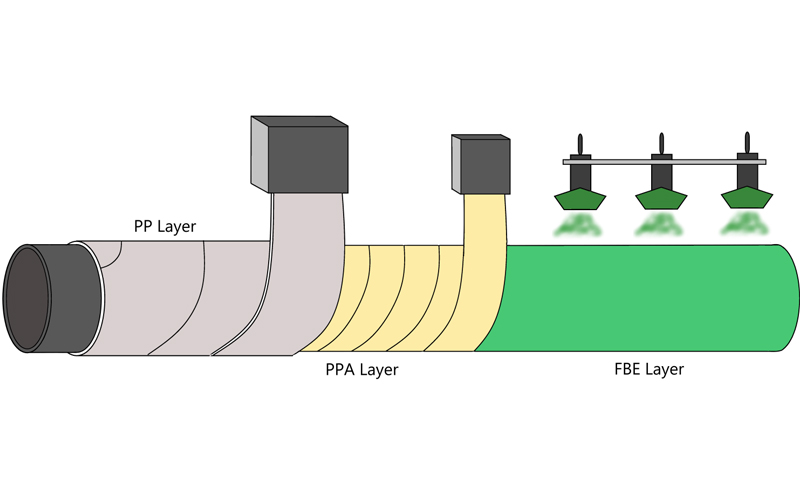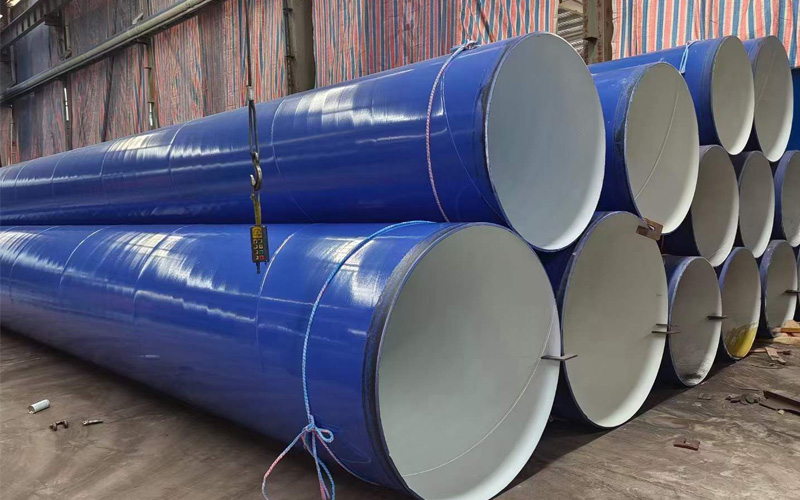ISO 21809 vs. DIN 30670: An Engineer’s Guide to 3LPE Coatings
Brief introduction
In corrosion protection for infrastructure, 3LPE (Three-Layer Polyethylene) coating is a globally trusted solution, especially for steel pipe in buried and subsea pipelines. Its durability makes it ideal choice to protect the process piping system for transporting oil, gas, water, etc. The quality of the three-layer LPE coatings is defined by strict standards: DIN 30670 (long-term German/European standard) and ISO 21809-1 (modern international standard according to ISO global coordination standard).
While both aim for high-quality 3LPE coatings on steel pipe and Process Piping, they differ significantly in key quantitative indicators—coating thickness, high-temperature performance, testing methods. For engineers specifying coatings, understanding these nuances is critical to proper project spec execution and ensuring Process Piping meets safety/longevity standards.
As a technical white paper, this paper uses quantitative data to analyze core differences between the two standards. Through the research backgrounds, technical indicators and key differences (e.g., High-temperature performance, adhesion testing), it provides engineers with a data-driven resource for 3LPE-coated steel pipe projects.
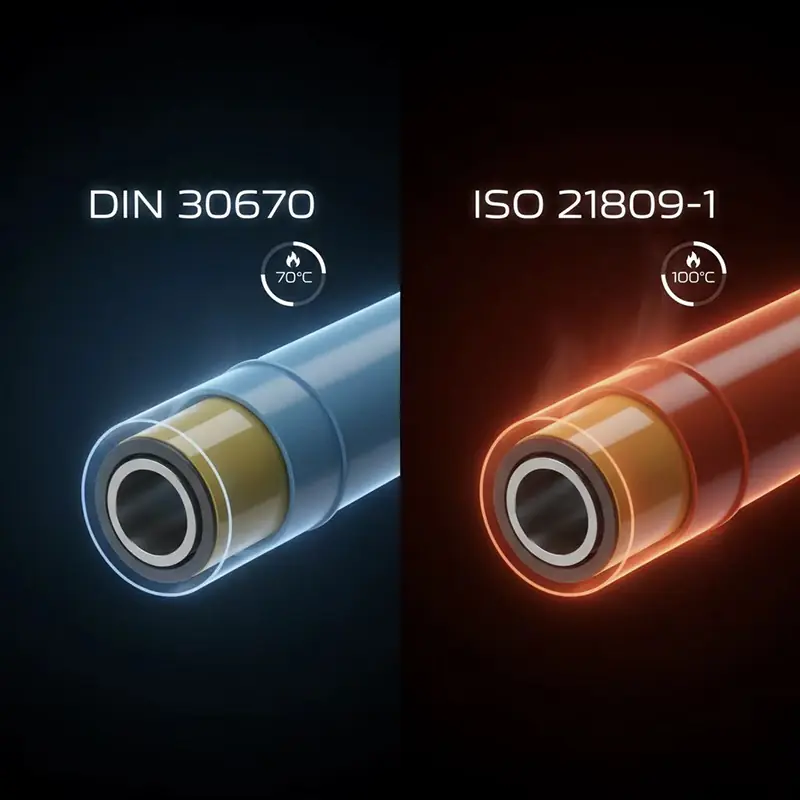
Standard background and philosophy
To understand ISO 21809 and DIN 30670, we first look at their origins and philosophies, which shape how they regulate 3LPE coatings for steel pipe and Process Piping.
German standard 30670
DIN 30670 is a veteran coating standard with decades of history. Rooted in German engineering, it is strictly regulated-providing clear guidance for every step of 3LPE coating on steel pipe, from material specifications to process details (e.g., Accurate polyethylene melting temperature or coating pressure of process piping). This leaves little room for interpretation, ensuring consistency, and remains a reliable benchmark in Europe for projects that require a proven and strict framework.
Organization for Standardization 21809-1
In contrast, ISO 21809-1 formulated by ISO is a modern standard, aiming at harmonizing the ISO standards of 3LPE coatings in the world. Recognizing global diverse needs for steel pipe and Process Piping, it adopts a more performance-based approach: sets clear targets but allows flexibility in achieving them. For example, it specifies minimum peel strength for Process Piping coatings but not exact equipment/technique, as long as the results meet standards.
However, this flexibility has not reduced the rigor. In key fields such as high temperature performance, which is very important for modern oil and gas steel pipes, ISO 21809-1 is more detailed and stricter than DIN 30670. It also conforms to other global ISO standards, ensuring compatibility of cross-international projects, and is an ideal choice for today’s interconnected engineering environment, in which process pipelines usually span many countries.
Quantitative Analysis – Head-to-Head Technical Comparison
The value of comparing ISO 21809-1 and DIN 30670 lies in their quantitative technical indicators. Below is an engineer-friendly table with data from the latest versions (DIN 30670:2012; ISO 21809-1:2018), focusing on metrics impacting 3LPE-coated steel pipe and Process Piping performance.
| Performance Index | DIN 30670 (2012) | ISO 21809-1 (2018) | Engineering Insight |
| Total Thickness | Fixed values for classes (e.g., N-v steel bar: 3.2 mm). | Variable minimum, accurately calibrated according to pipe diameter. | ISO 21809 provides a more detailed and economical method for thickness specification. |
| Peeling strength at 23°C | > 35 N/cm (for standard class N-n). | Usually more than 50 N/cm (different grade). | ISO standard usually requires a high minimum adhesive strength at ambient temperature. |
| High-Temp Peel Strength | Required for N-v: e.g., at 70°C > 15 N/cm. | Determined by detailed temperature levels (e.g., for 80°C, 100°C). | The main difference: ISO classification system provides a more comprehensive framework for the application of high-temperature steel pipe. |
| Cathode stripping at 23°C | ≤ 7 mm (after 28 days). | ≤ 8 mm (after 28 days). | The requirements for basic cathode peeling resistance are very similar, which is very important to long-term performance. |
| High-Temp Cathodic Disbondment | Required for N-v: e.g., at 65°C ≤ 15 mm. | Mandatory testing at the system’s maximum design temperature. | Key Difference:ISO’s requirement to test at the actual operating temperature represents a more rigorous and realistic engineering practice for Process Piping. |
Discussion on the depth of “high temperature”
High-temperature performance is a key divergence, critical for engineers specifying 3LPE coatings for steel pipe and Process Piping in high-temp environments (e.g., Oil/natural gas pipelines with hot fluids).
Method of DIN 30670 standard
DIN 30670 is robust but limited for high-temp use. It suits steel pipe and Process Piping operating up to 60-70 °C (N-v grade). Its high-temperature requirements are basic: N-v single peel strength test (70 degrees Celsius) and cathode peel test (65 degrees Celsius) No formal grading above 70 °C means engineers for steel pipe at 80 °C+/100 °C rely on extrapolation or extra-testing—creating uncertainty, as coating performance beyond DIN 30670 is unvalidated.
ISO 21809-1’s Approach
ISO 21809-1 fixes DIN 30670’s limits with a clear high-temp grading system—aligning with its role as a leading ISO standard for global Process Piping projects. It classifies 3LPE coatings by max recommended temp (80 °C to 110 °C, plus specialized grades). For each grade, mandatory high-temp peel strength and cathodic disbondment tests apply (e.g., Class 100 °C requires testing at 100 °C).
The system has great engineering value. For modern high-temp oil/gas steel pipe projects (Process Piping exceeds 70 °C), ISO 21809-1 provides a reliable framework. Engineers select a coating grade matching Process Piping’s max temp, confident it’s tested to standards—reducing risk, improving safety, and ensuring long-term steel pipe integrity.
A Deep Dive on “Adhesion”
Adhesion (measured via peel strength testing) is critical for 3LPE coatings to protect steel pipe and Process Piping from corrosion. While both standards specify peel strength, their testing methods differ—affecting n/cm readings. Engineers comparing performances must understand these differences.
Differences in methods
A key difference is the testing speed/angle: DIN 30670 uses a slow speed (50 mm/min) and a fixed 90-degree angle for steel pipe coatings. In some cases, ISO 21809-1 allows slightly higher speed (100 mm/min) and 180 degrees. These differences impact results—slower speeds/90 ° angles may lower n/cm vs. faster speeds/180 °C angles, even for the same Process Piping coating.
Sample preparation is also different: DIN 30670 has stricter sample size/edge requirements, while ISO 21809-1 provides less flexibility (both of them require representative steel pipe coating samples). Direct N/cm comparisons needs to be cautious-engineers must consider test parameters.
Summary
ISO 21809-1 and DIN 30670 are rigorous standards for 3LPE coatings on steel pipe and Process Piping, but differ in philosophy, requirements, and modern project suitability.
DIN 30670 is a classic and normative standard, with a reliable track record. Its step-by-step approach ensures coating consistency, ideal for Process Piping projects needing a rigid framework—especially apps up to 60-70 °C. It remains trusted in Europe and for projects prioritizing traditional practices.
ISO 21809-1, a leading ISO standard, offers a modern, globally harmonized approach. Its performance-based flexibility enables coating innovation, while detailed high-temp grading and strict testing make it ideal for modern steel pipe and Process Piping projects—especially high-temp (above 70 °C) or international compliance apps. Linking tests (e.g., high-temp cathodic disbondment) to Process Piping’s max temp gives engineers a targeted, reliable framework.
For engineers, both of them represent top 3LPE quality-the selection depends on the needs of the project. When specifying coatings for steel pipe or Process Piping, evaluate operating temperature, geographic location/regulations, and global compatibility.
A real solution provider (e.g., Allland does not only meet standards: it understands the technical differences between the two and recommends the correct standard. Whether your process piping needs the consistency of DIN 30670 (moderate temperature) or the strictness of ISO 21809-1 (high temperature, a key ISO standard), a knowledgeable supplier will customize the solutions to ensure long-term performance, safety and compliance.
Share:
Get Your Custom Steel Pipe Quote Today!
Provide us with your project details (like application, specifications, quantity). Our experienced team will respond with a tailored solution and competitive quote within 24 business hours.




